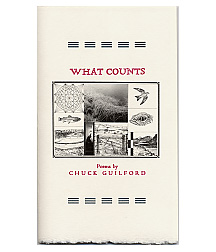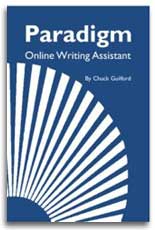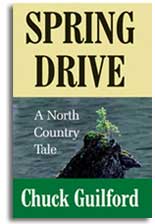Quotation Marks
You're probably familiar with these, and you may have used them occasionally. The following guidelines and activities will help you use them more effectively.
1. Use quotation marks to enclose a direct quotation. This means that whenever you want to include someone's exact words in a passage of your own writing, you should surround those words with quotation marks.
As I walked away from the car, the attendant asked, "Did you leave your key in the ignition?" It was a good thing he asked.
Quotation marks help your reader distinguish your words from those you are quoting. They also tell the reader that these are the source's exact words, that you have not rephrased or altered them in any way. If you change them even slightly, do not mislead the reader into thinking that they are exact. Notice the difference in the following statements.
Indirect quotation: President Kennedy said that we should ask what we can do for our country rather than what our country can do for us.
Direct quotation: President Kennedy said, "And so my fellow Americans, ask not what your country can do for you; ask what you can do for your country."
Both examples are satisfactory. The first doesn't give Kennedy's exact words, but it doesn't claim to; the second does give Kennedy's exact words and signals that fact by putting them in quotation marks. The following example misuses quotation marks.
Misquotation: President Kennedy said that "we should ask not what our country can do for us but what we can do for our country."
2. Use quotation marks to enclose the titles of stories, poems, and articles when they appear in the body of your paper. Do not use them to enclose your own title at the beginning of your essay. The titles of books, magazines, plays, and motion pictures should be underlined or italicized.
Example: I haven't yet finished Dubliners, but so far my favorite story is "A Little Cloud."
3. Use quotation marks to enclose words used in an unusual or unexpected way, especially when the words come from another language context or when they are spoken of as words.
Examples:
My cousin liked a "spot o' tea" as much as I liked a "slug a' whisky."
The word "mob" has an interesting history.
A Final Word on Quotation Marks
At the end of a quotation, periods and commas always go inside quotation marks. All other marks go inside only if they are part of the quoted material.
Even after you've learned the above rules for using quotation marks, you may encounter tricky situations, especially when other punctuation marks are used with them. Most problems, however, can be avoided by learning the following rule:
At the end of a quotation, periods and commas always go inside quotation marks. All other marks go inside only if they are part of the quoted material.
Examples:
We read a story called "The Egg."
Have you ever read "The Egg"?
Just then Dr. Klein asked, "Who wrote 'The Egg'?"
"Sherwood Anderson wrote 'The Egg,"' I replied.
"Why?" Dr. Klein asked.
Activities
4.23 Some of the following sentences are direct quotations, some are indirect. If the sentence contains a direct quotation, punctuate it correctly. If it contains an indirect quotation, reword the sentence to make the quotation direct, adding the necessary punctuation.
a. Tim's father said that the new accounting system was a pain in the neck.
b. Now you've really messed things up Arthur shouted.
c. Who said there's a sucker born every minute?
d. The policeman said that our dog had to be on a leash.
e. How was the Chem test Miranda inquired.
f. Grandma asked us to play You Can't Get to Heaven in a Rocking Chair.
g. Doesn't it seem strange that our money says In God We Trust asked the Reverend Ike.
h. Dora said that she would pay whatever she had to for that antique clock.
i. You can't get blood from a turnip my mother used to say. j. Patrick Henry said to give him liberty or give him death.




